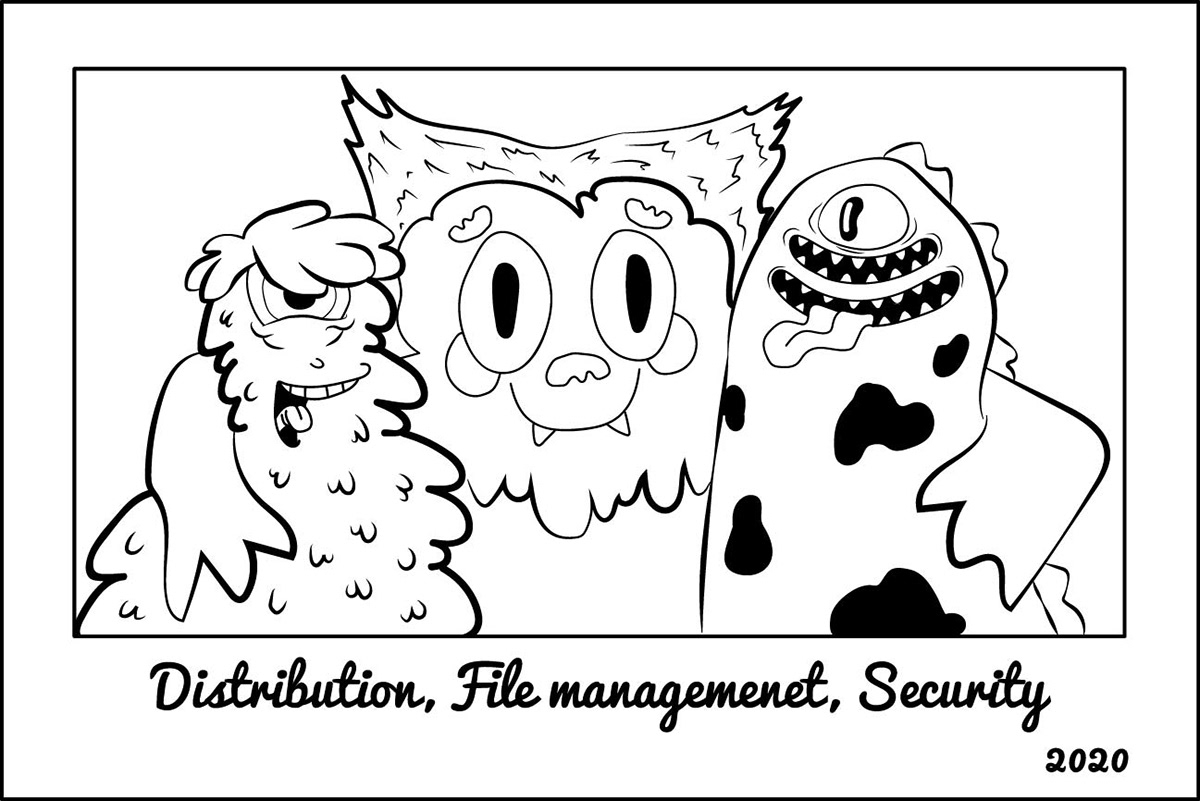Digital Asset Management TO THE RESCUE
We’ve all been there.
It’s 8:15 in the morning and you just got settled in to start working at your job – the marketing manager at a size non-profit community healthcare provider.

You sip your coffee, open up your email – and there it is. The director of fundraising just let you know that they need to change out images used for the new landing page of your site – the one for the big fundraiser that launches in just two days.
Not a big deal, except that the changes have to be made in time for a company-wide presentation – at 9 am.
The director wants images with children instead of adults. Plus they need to be young, but not infants. There needs to be a blue background. And you need to come up with at least a dozen to be selected from.
You take a deep breath, but it doesn’t lessen the panic. Which of our freelance photographers has images like that?
When’s the last time somebody uploaded them? How did they come in to us?
Dropbox? Maybe. Lightroom?
Dropbox? Maybe. Lightroom?
Again, maybe. Perhaps there’s something out on Google Drive.

Possibly one of your teammates knows, but it’s now 8:30 and they’re in a meeting. You start to dig around and can see that you are quickly getting nowhere. And then the doom sets in…
For marketing and design professionals, whether working on projects from scratch or modifying existing work, getting their hands on the right media quickly, accurately, and efficiently is often a challenge.
If the team is not working with a DAM, this can be very problematic.
Files come in from sources both internal and external to the business in various formats and can end up scattered across the group instead of being found in a centralized location.
Files may be modified and not uploaded where everyone can get to it. File names can differ making them hard to identify. Other files may be hard to
preview causing a slowdown of work.
preview causing a slowdown of work.
Does all this sound familiar? If so, it means that maybe it’s time for your company to get organized with DAM software.
So – what is DAM software?
DAM, or Digital Asset Management software is, simply put, a PROBLEM SOLVER.
Think of it as a tool that functions as a centralized repository or digital asset library, readily accessible but secure, and designed to enhance efficiency that every company involved in the creative process could benefit from.
But to best understand why, let’s take a look on a higher level at some of the problems that hinder the productivity of creative teams.
But to best understand why, let’s take a look on a higher level at some of the problems that hinder the productivity of creative teams.

When working with digital files, there are three BIG stumbling blocks:
* Distribution, Access, and the Production Bottleneck
* File Management, Multiple File Types, Multi-click Previewing, and Versions
* Data Inclusion, Copyright, and Security
Distribution, Access, and the Production Bottleneck
Without using digital asset management software, media is often located wherever the last person who touched it left it. When working with external clients, creatives may be instructed to retrieve images from the client’s source.
Often these get downloaded to their PC and stay there.
Sometimes the reverse happens – clients are given access to their agency’s server and dump files in the right place. But many times they get confused and put them wherever they can just to get the task over with.
Sometimes the reverse happens – clients are given access to their agency’s server and dump files in the right place. But many times they get confused and put them wherever they can just to get the task over with.

Other times, media assets may come in directly from a client or freelancer via email attachments, on a thumb drive, or on a CD (yes, that still happens) and those devices go to somebody working on the project who again puts them on just their PC.
Too many variables including where images are coming from and where they go creates a big problem. The time spent looking around for digital asset files before realizing they’re not readily accessible is a big waste, as is the time then used on email, texting, or phone calls trying to find the whereabouts of what’s needed.
File Management, Multiple File Types, Multi-click Previewing, and Version Questions
In order to keep moving along in the production workflow, the creative needs to find the right files among what could be many to work with. Without the help of a DAM, this usually involves clicking open each file, sometimes over varying file types.

The problem here is twofold. Depending on what software is being used to preview files, not all of them are easy to open or even show up for previewing. Plus, in cases where somebody is using regular folders on a computer for storing and collating image files (like Google Drive), thumbnails may be available or not, and they may be very small or of poor quality.
This means that each of these files likely needs to be opened up to review. Sometimes, as media files are being reviewed, staff find very similar versions of the work – but there is no readily apparent indication of which is the one that needs to be used for the project they are working on, and this kicks off an exchange of messages trying to sort that out.
Data Inclusion & Keyword Assignment, Copyright, and Security
Without a digital asset management system in place, there is little to no way to provide extra data like keywords about files. If keywords can’t be assigned to say, images of products, trying to find that one image amidst the thousands on hand is just like looking for the proverbial needle in a haystack.

Also without keyword assignments, there can be confusion over what kind of image is really being sought out. For example, say a marketing agency is working with a company that resells scientific products.
The art director may ask to see a bunch images that show balances. A person on the design teams collects up what they think are the right images and sends them along. The director picks two different one to use in mockups for the client’s new ad campaign and sends the proof to the client.
The client sends back a reply saying the images aren’t right – they are scales, not balances. The team pulls another set and sends them back to the art director who then sends them to the client for review before replacing them in the design. But after submitting those, an email is received back from the client saying that the new set sent was a mix of the two.

The art direction thinks Hmm? There’s a difference? After a couple of emails exchanged with the client the art director finally gets the difference and then proceeds to explain what that is to the design team in a 10-minute long meeting with visuals, all so this kind of embarrassment doesn’t happen again.
So how does this stop happening? There are several things that can make a difference. Keyword assignment helps. A simple, intuitive list of words assigned to each image, (in this case, done by the client who best knows what the images represent) would have saved lots of time and confusion.
Probably one of the most frustrating things to anyone in the creative field is when they that they’ve already done the work but the file can’t be found. Hours and hours spent creating a design from scratch, retouching a photo, editing audio on a video – wasted. To avoid issues with versioning, digital assets can be marked as “Approved,” “Rejected,” “For Review,” or “Changes Are Required” Additionally, with a DAM system, color labels can be used to further group similar items together for easy access.
Also of note at this stage of the production are copyright and usage issues. Again, if a file has no added data markers to indicate that a copyright exists and under what terms it may be used, any company using that image is subjecting themselves to potential copyright infringement lawsuits.

Finally, the security of media files comes into play. If a company cannot guarantee that their methods for storing files is secure, and that the transferring of the same files is also secure, clients often have a problem sending files through internet-based systems.
This leads them to sending versions through the previously mentioned methods – email, thumb drives, etc. and this perpetuates the problems encountered when not using digital asset management software.
Here’s Why You Should Be Using a Digital Asset Management System
Relying on archival storage, like Lightroom, Dropbox, OneDrive, Google Drive, or just regular folders, is very rigid. There’s no centralized location for placing files. The files are not easily accessible. There is little to no file naming convention.
There are too many file types. Both internal and external users inevitably get frustrated and further break down workflows. Previewing files can be highly burdensome.

The search capability is extremely limited without the ability to add keywords to media files. You’ve seen this. You know, that image that’s called “20200221_114340.jpg.” Yeah, there’s a date in that, but so what.
Without looking at a preview at least, you have no idea what it is. Some companies, maybe even yours, try to come up with and adhere to naming conventions. But as time moves along, and with all the different people using the “archive” this standard way of naming things gets lost, leaving things really disorganized.
As we’ve seen, for the creatives, finding media becomes very time consuming, and work slows down dramatically.
A good digital asset management system solves big issues in three very simple ways:
It acts as a secure, centralized media library – all your digital files are in one place
It is accessible to everyone you want it to be – on any device and at any given time
It connects to commonly used editing software – allowing instantaneous file saving and versioning
It uses keyword indexing instead of relying on file naming conventions – one of, if not THE biggest breaking points in any file management plan
DAM software provides a means of better control of digital assets. Better control provides better usability of those assets and this brings a cost savings. Think about the list of issues above. If you were to analyze the time lost and calculate how that impacts the bottom line of your business, you likely wouldn’t be happy.

In 2012, GISTICS presented an industry paper showing that, when including searching for images, quality checks, verification of copyright and permissions, doing backups, and the like, creative professionals spent on average one out of every ten hours they work doing media file management.
That doesn’t sound like much but, based on average salaries at the time, the calculation came out to nearly $7,000 per employee per year. This figure is likely even higher now as the past ten years has seen an explosion of growth in demand for online content which typically raises costs across all sectors involved with content creation.






